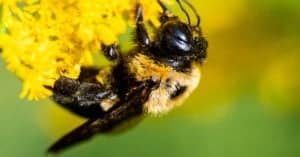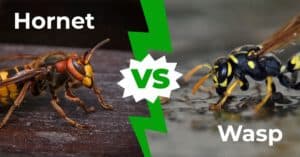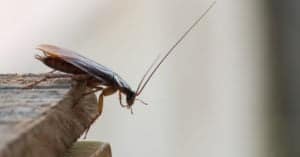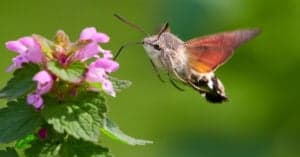What Cockroach Larvae Look Like
Cockroaches are notorious for taking up space and breeding faster than rabbits. If you’ve seen one cockroach, there are likely many more that you can’t see. Cockroach larvae look similar to adult roaches; they’re usually found in or around cockroach nests. Not all roaches come inside though, most prefer to live their lives outdoors, away from humans. Regardless of where they live, how big they are, or whether or not they hiss, all cockroach larvae start and end the same.
Here, we’ll take a closer look at just what people mean when they talk about cockroach larvae. Then, we’ll go over the entire lifespan, and life stages, of a cockroach. We’ll go into detail about what cockroach larvae look like, and how you can identify them. Finally, we’ll cover all the methods you can use to get rid of roach larvae, and how you can prevent them from growing up in your home or business altogether.
Do Cockroaches Have Larvae?
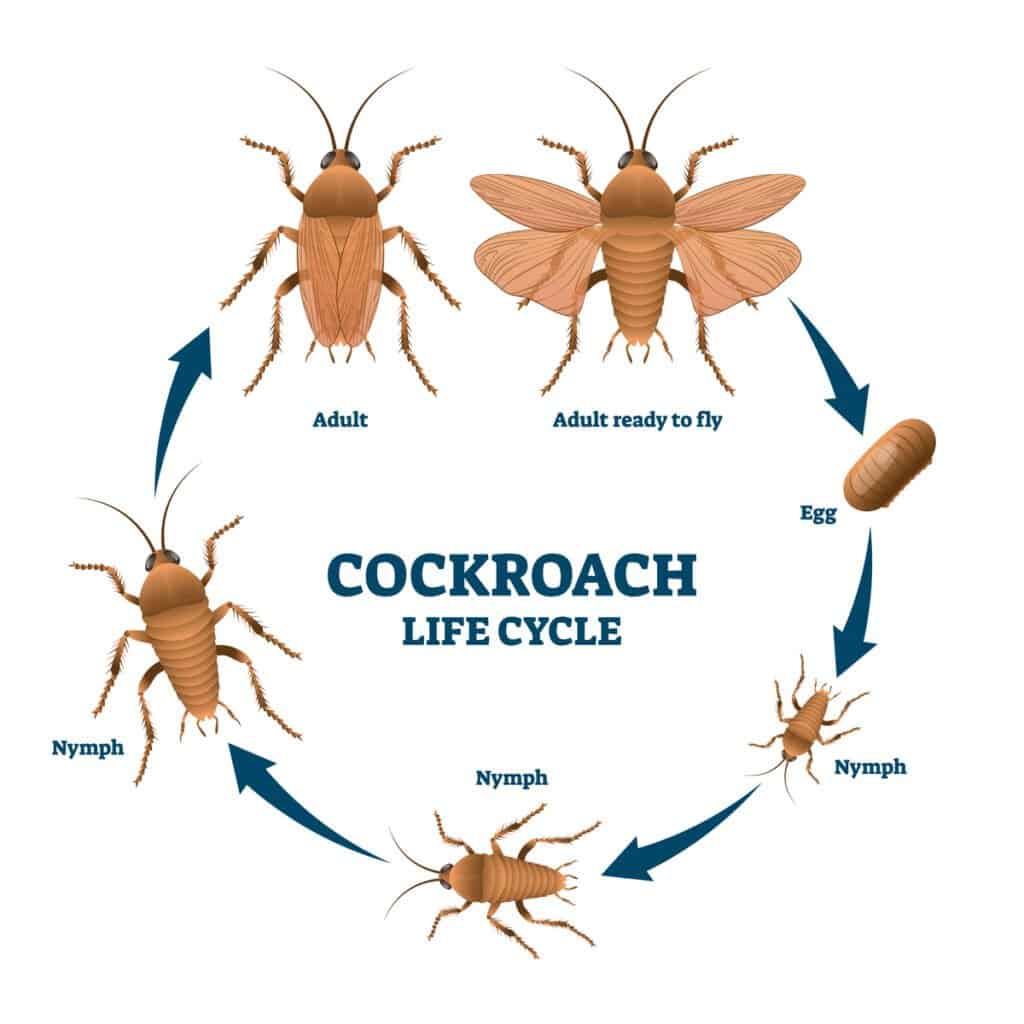
VectorMine/Shutterstock.com
Cockroaches, like many insects, begin life as eggs. These eggs incubate for between 3-80 days before hatching. Once hatched, the baby cockroaches look like miniature versions of adult cockroaches. They’re translucent white, and very small. Unlike other insects, like flies, cockroaches do not have larvae.
Baby cockroaches grow at different rates, depending on the species. Some take only days to mature, while others may take years to grow to adulthood. As they grow, the baby roaches successively shed their skins to make room for new growth. This process is called molting. Studies show that the more nymphs there are in an area, the faster they mature.
What Is the Larva Stage of a Cockroach?
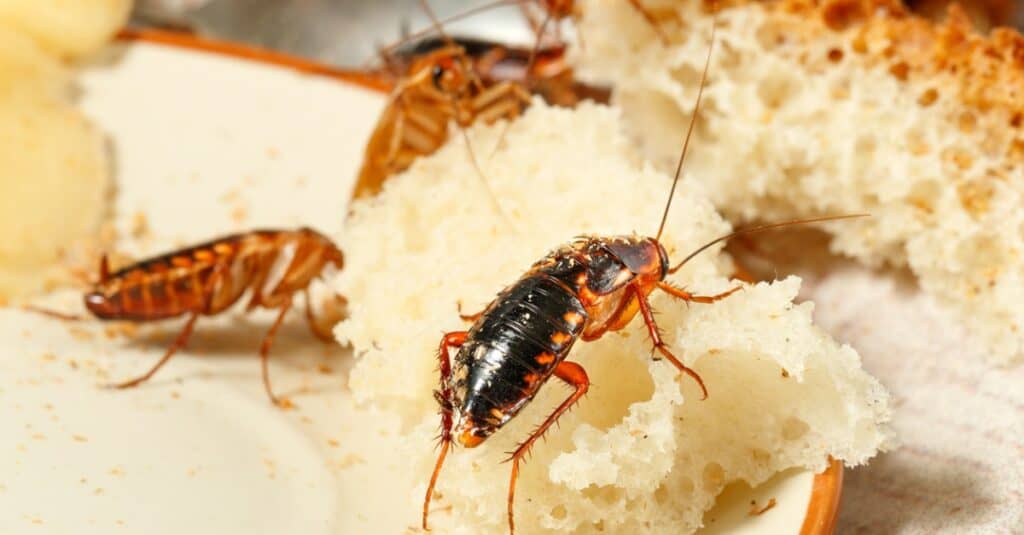
iStock.com/tenra
Baby cockroaches are known as nymphs. Each nymph has distinct markings, but most are pale white. Nymphs of some species, like the Cuban cockroach, are actually dark brown to black, though this is not the norm for cockroach nymphs. Unlike larvae, nymphs have almost every feature the adults have.
One thing nymphs of all cockroach species lack is wings. Even if the adult of the species has fully functional wings, the nymphs won’t grow them until after they’ve completed their final molt.
Do Baby Cockroaches Look Like Maggots?
Reading the words ‘cockroach larvae’ may make you think of maggots, the kind that infest rotting food and desiccated flesh. But, cockroach nymphs are anything but. Unlike maggots, which have no legs, and depend on liquifying food through their mouth, cockroach larvae scuttle around on their own legs, and chew up anything edible they find.
While maggots enter a puparia to molt only once or twice, emerging as a completely different looking bug, cockroach nymphs grow by shedding their exoskeleton. This is basically like shedding their skin. Each time the cockroach molts, it grows a little bigger and harder. Once they reach adulthood, they molt no more.
How Many Baby Roaches per Egg Case?
Baby roaches hatch from eggs. Most eggs are encased in egg cases, which are either carried around by the mother, or left in a safe place for incubation. Some species of cockroach, like the Australian rhinoceros cockroach, are ovoviviparous, meaning the eggs actually hatch inside of the mother, and she gives birth to live young.
Each egg case has between 10-60 eggs inside, with most having between 14-30. When the nymphs hatch, they’re immediately ready to scurry away. Nymphs are the most populous of all cockroach life stages, as not all of them make it to adulthood.
Cockroach Lifespan
Cockroaches have very distinct life stages; egg, nymph, and adult. The length of each stage varies per species, with some species, like the American cockroach, taking only four days to incubate as eggs. Some species remain nymphs for most of their lives, living only a few months once they reach adulthood. Other species spend a very long time as an adult, and may live up to ten years.
Most pest species of roach have lifespans of less than two years. In that time, they can produce hundreds of cockroach larvae.
How Do You Get Rid of Roach Larvae?

iStock.com/Dmitriydanilov
The first step in getting rid of roach larvae is identifying the problem. If you see one cockroach scuttling around, it’s almost certain that there are more that you can’t see. Start by looking under furniture, behind appliances, and near plumbing fixtures. Once you’ve found the cockroach nests, you can either call a professional pest exterminator, or take care of the problem on your own.
Start by laying roach traps near where you saw the cockroach larvae. Then, you can use pesticides to hopefully eradicate the problem. Be sure to use caution when using any pesticide, as many pose dangers to both humans and pets.
How Do You Keep Cockroach Eggs Away?
One of the most basic things you can do to avoid cockroach larvae and eggs is clean up all garbage and food immediately. Cockroaches are attracted to sources of food like waste, feces, and garbage. They also like private, dark areas, so getting rid of clutter and keeping storage spaces clean and dry is a must. Finally, replace all corrugated cardboard boxes with plastic totes; roaches love eating cardboard.
Bugs That Look Like Cockroaches, But Aren’t
Cockroaches go by many names, including roach, palmetto bug, and wood roach. They’re also often mistaken for other bugs. These include beetles, water bugs, bed bugs, and termites. Unlike these bugs though, cockroaches have thick leg spikes and heads that are invisible from above.
Unlike water bugs, roaches don’t have large mouth pincers. And, unlike beetles, they move fast, and have narrower bodies. Cockroaches tend to be larger than bed bugs, and they have much smaller heads than termites. Cockroach larvae look like smaller, lighter versions of the adults, they may be mistaken for albino cockroaches.
More from A-Z Animals
Cockroaches are notorious for taking up space and breeding faster than rabbits. If you’ve seen one cockroach, there are likely many more that you can’t see. Cockroach larvae look similar to adult roaches; they’re usually found in or around cockroach nests. Not all roaches come inside though, most prefer to live their lives outdoors, away from humans. Regardless of where they live, how big they are, or whether or not they hiss, all cockroach larvae start and end the same.
Here, we’ll take a closer look at just what people mean when they talk about cockroach larvae. Then, we’ll go over the entire lifespan, and life stages, of a cockroach. We’ll go into detail about what cockroach larvae look like, and how you can identify them. Finally, we’ll cover all the methods you can use to get rid of roach larvae, and how you can prevent them from growing up in your home or business altogether.
Do Cockroaches Have Larvae?

VectorMine/Shutterstock.com
Cockroaches, like many insects, begin life as eggs. These eggs incubate for between 3-80 days before hatching. Once hatched, the baby cockroaches look like miniature versions of adult cockroaches. They’re translucent white, and very small. Unlike other insects, like flies, cockroaches do not have larvae.
Baby cockroaches grow at different rates, depending on the species. Some take only days to mature, while others may take years to grow to adulthood. As they grow, the baby roaches successively shed their skins to make room for new growth. This process is called molting. Studies show that the more nymphs there are in an area, the faster they mature.
What Is the Larva Stage of a Cockroach?

iStock.com/tenra
Baby cockroaches are known as nymphs. Each nymph has distinct markings, but most are pale white. Nymphs of some species, like the Cuban cockroach, are actually dark brown to black, though this is not the norm for cockroach nymphs. Unlike larvae, nymphs have almost every feature the adults have.
One thing nymphs of all cockroach species lack is wings. Even if the adult of the species has fully functional wings, the nymphs won’t grow them until after they’ve completed their final molt.
Do Baby Cockroaches Look Like Maggots?
Reading the words ‘cockroach larvae’ may make you think of maggots, the kind that infest rotting food and desiccated flesh. But, cockroach nymphs are anything but. Unlike maggots, which have no legs, and depend on liquifying food through their mouth, cockroach larvae scuttle around on their own legs, and chew up anything edible they find.
While maggots enter a puparia to molt only once or twice, emerging as a completely different looking bug, cockroach nymphs grow by shedding their exoskeleton. This is basically like shedding their skin. Each time the cockroach molts, it grows a little bigger and harder. Once they reach adulthood, they molt no more.
How Many Baby Roaches per Egg Case?
Baby roaches hatch from eggs. Most eggs are encased in egg cases, which are either carried around by the mother, or left in a safe place for incubation. Some species of cockroach, like the Australian rhinoceros cockroach, are ovoviviparous, meaning the eggs actually hatch inside of the mother, and she gives birth to live young.
Each egg case has between 10-60 eggs inside, with most having between 14-30. When the nymphs hatch, they’re immediately ready to scurry away. Nymphs are the most populous of all cockroach life stages, as not all of them make it to adulthood.
Cockroach Lifespan
Cockroaches have very distinct life stages; egg, nymph, and adult. The length of each stage varies per species, with some species, like the American cockroach, taking only four days to incubate as eggs. Some species remain nymphs for most of their lives, living only a few months once they reach adulthood. Other species spend a very long time as an adult, and may live up to ten years.
Most pest species of roach have lifespans of less than two years. In that time, they can produce hundreds of cockroach larvae.
How Do You Get Rid of Roach Larvae?

iStock.com/Dmitriydanilov
The first step in getting rid of roach larvae is identifying the problem. If you see one cockroach scuttling around, it’s almost certain that there are more that you can’t see. Start by looking under furniture, behind appliances, and near plumbing fixtures. Once you’ve found the cockroach nests, you can either call a professional pest exterminator, or take care of the problem on your own.
Start by laying roach traps near where you saw the cockroach larvae. Then, you can use pesticides to hopefully eradicate the problem. Be sure to use caution when using any pesticide, as many pose dangers to both humans and pets.
How Do You Keep Cockroach Eggs Away?
One of the most basic things you can do to avoid cockroach larvae and eggs is clean up all garbage and food immediately. Cockroaches are attracted to sources of food like waste, feces, and garbage. They also like private, dark areas, so getting rid of clutter and keeping storage spaces clean and dry is a must. Finally, replace all corrugated cardboard boxes with plastic totes; roaches love eating cardboard.
Bugs That Look Like Cockroaches, But Aren’t
Cockroaches go by many names, including roach, palmetto bug, and wood roach. They’re also often mistaken for other bugs. These include beetles, water bugs, bed bugs, and termites. Unlike these bugs though, cockroaches have thick leg spikes and heads that are invisible from above.
Unlike water bugs, roaches don’t have large mouth pincers. And, unlike beetles, they move fast, and have narrower bodies. Cockroaches tend to be larger than bed bugs, and they have much smaller heads than termites. Cockroach larvae look like smaller, lighter versions of the adults, they may be mistaken for albino cockroaches.

